Heroes in hardhats
January 8, 2014
They have rescued small children from oncoming traffic. They have brought a victim of attempted murder back from the brink of death. They have braved rising floodwaters and raging house fires. Last month, they dragged an unconscious driver from a burning SUV seconds before the truck’s gas tank exploded.
Not all first responders are sheriff’s deputies or firefighters. Some also find themselves in the occasional life-and-death situation while minding the county’s infrastructure at the Department of Public Works.
Emergency response has been among DPW’s core services since 1985 when the department was created, though the public tends to be more familiar with the department’s work in engineering, flood control and road maintenance. DPW maintains a 24-hour emergency operations center, and employees there are trained for disaster.
In fact, over the years, so many DPW hardhats have stepped into the breach so often that after a beloved employee named Kelly Bolor died in Iraq in 2003 while serving as a member of the U.S. Army Reserves in Mosul, the department created an in-house award for valor that has been presented in the wake of a number of incidents.
Since that date, nearly two dozen DPW employees have received the Kelly Bolor Award for heroism of one sort or another, from Ignacio Orozco Jr., who used a county dump truck to head off a potentially fatal car crash on Imperial Highway last year to members of Road Maintenance Division Crew 551, who extinguished a raging house fire in 2011 near their Antelope Valley work site, to Gary Clinton, who used his motorgrader to rescue panicked motorists from a flooded crossing in the high desert in 2005.
“I’ve been with the county for 29 years, and I think we’ve all at one time or another been first responders in some kind of situation,” says Steven Smith, a road maintenance superintendent in Agoura whose crew members, Lowell Johanknecht and Enrique Ramos, are expected to be nominated this year for pulling a woman from a burning SUV on Mulholland Highway on September 18.
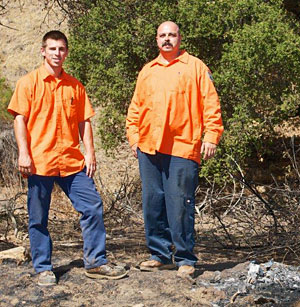
Lowell Johanknecht, left, and Enrique Ramos are the latest Public Works heroes. Photo/ Christian Garcia DPW
“If an accident happens and you’re around, you rise to the occasion. This job can be dangerous, too.”
That certainly was the case for the award’s first recipient, Marco Andonaegui, who was replacing traffic signs in 2004 on Topanga Canyon Boulevard near the 101
Freeway when he glanced up and saw a child tumble out of an SUV.
“He was 8 years old and his buckle must have come undone,” says Andonaegui, a 30-year DPW employee who says he still gets chills when he thinks of how close the child came to being hit by oncoming traffic.
“I was alone, going the opposite direction and they were just a couple a cars in front of me.”
Andonaegui scrambled out of his county vehicle, jumped the median and grabbed the child as the SUV drove on, the child’s mother oblivious to what had happened.
“Cars were swerving around us, braking around us, the little boy was crying and crying,” recalls Andonaegui. “I don’t know how the heck I didn’t get hit, let alone the little kid.”
Fifteen minutes later, he says, the mother circled back, frantic.
“She was desperate and grateful, and she must have given me 20 or 30 thank yous, but she was crying so hard, she forgot to ask for my name or give me hers,” he remembers.
It was only afterward, he says, that he learned she had written down the phone number on the back of his county truck and called the department. A father of grown children, he says he never heard from the woman again and still doesn’t know her name or her son’s name, but he still keeps his award plaque in his Lynwood living room.
Dam Operator Gary Elrod says he and his fellow crewmen on the remote San Gabriel Dam compound likewise never heard again from the young man they rescued.
It was early on a Tuesday morning, May 29, 2007, and the seven dam workers, several of whom live on the isolated site high in the San Gabriel Mountains, were starting their day early when Assistant Dam Operator Benny Velasco spotted a body in a drain near the roadside.
“It looked like he’d been attacked at another location, stuffed in the trunk of his car, driven to the entrance area of the San Gabriel Dam in Azusa Canyon and left there for dead,” recalls Elrod. “I personally counted nine stab wounds.”
A 25-year DPW employee who had worked in his youth with an emergency response team in Saudi Arabia, Elrod says he grabbed his blanket and safety gear and started to administer first aid.
As the crew waited for paramedics to arrive, Elrod tried to keep the barely coherent victim from falling into unconsciousness.
“This isn’t your time,” he remembers repeating to the young man as the sun rose over the mountains. In the hospital, Elrod says, the victim, who was from Whittier, refused to name his attacker, and the case was still unsolved three months later when he stopped asking about it.
“He denied everything he’d said to me when the sheriff questioned him later,” says Elrod. “All I know is, he’s out there somewhere with a horror story to tell his children and he’s lucky we came along when we did.”
The workers say they don’t mind that the recipients of their help often have no idea who they are or what department they work for.
“It makes you feel good just to be able to help,” says Johanknecht, the 23-year-old road laborer who pulled the woman from the burning truck last month on Mulholland Highway near Las Virgenes Road.
Johanknecht, who lives in Redondo Beach, says he had finished his shift at the Road Maintenance Division’s Yard 339 near Agoura Hills and was heading off to meet his girlfriend at their community college when he noticed the plume of smoke and the overturned Chevrolet Suburban. Pulling over on his motorcycle, he called 911 and ran toward the crash site.
“The 911 operator asked if anyone was in the car, and I said yeah, there’s a lady in the driver’s seat,” he remembers. “Right then, an older gentleman on a bicycle came up the hill and said, ‘What do you want to do?’ And I said, ‘Get her out!’”
Just then, he says, Ramos pulled over, having seen the skid marks, the smoke and his coworker’s abandoned Suzuki DR650. Working together, the three wrestled the woman, who appeared to be in her 40s, out of the black SUV and back toward the road’s shoulder.
“She was panicked and freaking out and pushing us away and in shock,” Johanknecht says, “and smoke was engulfing the car and all the air bags had deployed and blocked all the windows.”
As they carried the woman to safety, the SUV’s gas tank exploded, igniting a brushfire that engulfed nearly two acres before two Super Scoopers and four water-dropping helicopters were called in to contain it. Los Angeles County Fire Inspector Scott Miller could not release the woman’s name, but said she was transported to a local hospital. Ramos and Johanknecht say they never found out who she was and haven’t heard from her.
Johanknecht says his parents and girlfriend were “worried and proud at the same time” when they heard what happened, and wishes the crash victim—whoever she is—a speedy recovery.
“You never expect this, but you never know—we work out here in no man’s land, and a lot of things happen,” he says. “I just hope that someone would do me the same favor if something like that ever happens to me.”
Posted 10/15/13
Historic fire’s legacy lives on
August 28, 2013
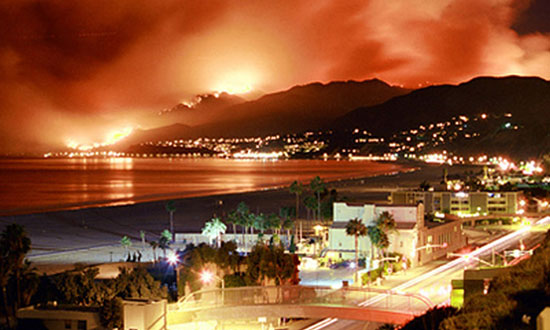
The Old Topanga Fire drove home the need for Super Scoopers. Topanga Messenger photo/Martin Nate Rawner
The first spark was sighted at 10:46 a.m. on the first Tuesday of November, 1993. It was hot. The Santa Anas were gusting. Fires had just consumed swaths of Altadena and Laguna Beach, and now came a 911 call to report a fire on Old Topanga Canyon Road, near the water tower. Minutes later, the smoke could be seen from a half-mile away.
Over the course of 10 days, the Old Topanga Fire would consume 16,516 acres, killing three people and injuring 21 others. Some residents will never forget the way it exploded through Malibu, hopping from canyon to canyon, cresting Saddle Peak in a 200-foot-long wall of flame.
But the fire also made another kind of history in Los Angeles County. In the wake of its devastation, the county became the first jurisdiction in California to begin regularly leasing the Canadian tanker planes known as “Super Scoopers”—a move for which firefighters were particularly grateful this week as a far-earlier-than-usual fire season hit Yosemite National Park, scorching a wilderness area the size of Chicago.
“The fires this year have been extreme,” says Los Angeles County Fire Chief Daryl Osby, citing the hundreds of fires that occurred this year throughout California. The Springs Fire struck in May, and then came June’s Powerhouse Fire, which destroyed more than 32,000 acres and some two dozen houses near Lake Hughes in a month that, in past years, has always been cool and foggy.
Lower-than-usual rainfall and a lack of June gloom, he says, have made the canyons as dry now as they usually are in autumn, when the Santa Ana winds typically turn L.A.’s canyons into fire hazards. Worse, the county hasn’t had a major fire since 2009, meaning that the county has mountains of parched vegetation to burn.
All of this, meanwhile, comes in the midst of a three-year drought that has disrupted conventional fire patterns. How much it all has to do with climate change is beyond his expertise, the chief says, but the upshot has been a new kind of fire season—bigger, earlier, less predictable and more lethal than ever.
“The Powerhouse Fire burned like it was September, and it wasn’t even being pushed by Santa Anas,” he says. “I can’t say yet whether this season is going to be the worst ever, but the potential is there.”
That, he says, is why the county moved up this year’s timeline by a full month for arrival of the Bombardier CL-415 Super Scoopers that it has leased for the past 19 years from the government of Quebec. Able to fly at speeds of up to 170 mph, the iconic yellow planes dip into oceans and lakes, pulling in 1,620 gallons of water in 12 seconds to dump from the air onto brushfires—a powerful tool for which canyon dwellers lobbied mightily after the 1993 fire.
“We’ve known since probably around February that we had the potential for a volatile fire season,” says Osby. “When we saw in June that the fuel moisture levels in our vegetation were already down to what we would normally see in September, we started collaborating with Quebec to see how early we could get the Super Scoopers.”
The planes arrived with their Canadian crews on August 15, as opposed to their usual start date in mid-September, and already they have been deployed on brushfires in Topanga and Calabasas.
“Your fire conditions in L.A. are worse than in the past years,” says Chief Pilot Carl Villeneuve, who expects to remain with the two leased planes until mid-December, if not longer. “Those two fires weren’t hard to put out because there are no big winds yet, but when the big winds come, that could change.”
Osby says the early Super Scooper deployment is just one part of a strategy to pre-empt a potentially lethal autumn. (The two planes were joined by an Erickson Air-Crane Helitanker, also contracted this year for extra backup.)
“We have also been aggressive with our fire prevention inspections, and in working with citizens to ensure proper brush clearance,” the fire chief says. “We provided additional training to our firefighters, getting them out to wild lands for practice. We did additional simulations with surrounding agencies, and intensified training with our incident management teams.”
The department has been urging the public to be vigilant, to become familiar with the department’s “Ready! Set! Go!” program and to evacuate when fire officials tell them to get out of a threatened area, rather than stick around to try to guard their houses.
“Our response capability is better now than it was 20 years ago,” Osby says. “We have additional aircraft, more sophisticated training and better weather predictions.”
Posted 8/28/13
Fighting fire with some super friends
September 25, 2011
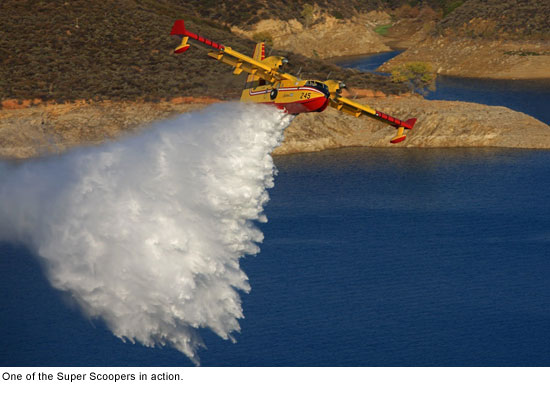 Michel Proulx has spent so many autumns in Los Angeles that he’s now a regular at pickup hockey games in the San Fernando Valley. Stéphane Monette has used his off-hours to teach himself to speak Spanish and to surf. One year, it was so dry for so long that Christmas came and went before Carl Villeneuve could return to his wife and three children near Quebec City.
Michel Proulx has spent so many autumns in Los Angeles that he’s now a regular at pickup hockey games in the San Fernando Valley. Stéphane Monette has used his off-hours to teach himself to speak Spanish and to surf. One year, it was so dry for so long that Christmas came and went before Carl Villeneuve could return to his wife and three children near Quebec City.
“It was OK,” he recalls with a laugh in his French-accented English. “You do not have snow in Los Angeles, but you have a lot of the winter decoration. One time in each four or five years, it is not so bad.”
For the past 18 years, an elite band of French-Canadian pilots and mechanics has left the Quebec backcountry to spend their autumns—and occasionally their winters—fighting fires in Los Angeles.
Fresh from their own wildfire season, they board two Bombardier CL-415 Super Scoopers leased from the government of Quebec by Los Angeles County. In the bright fixed-wing aircraft, which fly much lower and slower than commercial jet planes, they make the long trip south and west to the land of sunshine, celebrities and Santa Anas.
Once here, they check into the Burbank Holiday Inn—”our Hollywood house,” as Proulx jokingly calls it. Some meet wives and children. Some unpack sports equipment. Some pull out fiddles and guitars and hold Acadian jam sessions in their hotel rooms.
Then they get down to some of the most dangerous work on either side of the nation’s northern border.
“It’s really a unique situation, ” says Battalion Chief Anthony Marrone, who for the past seven years has acted as the Los Angeles County Fire Department’s liaison with the fliers from Canada’s Service Aérien Gouvernemental.
“They come here to risk their lives for people they don’t know, for a place that isn’t their country, for a job in which they’re not making a ton of money. But over the years, they’ve really become a part of our firefighting family.”
The famed Super Scoopers, which over the years have become a red-and-yellow icon of Southern California’s fire season, skim water from local lakes and the ocean and airdrop it onto wildfires. Los Angeles County has leased two of the sturdy aircraft during fire season annually since 1994, a year after the Old Topanga Fire killed three people and destroyed hundreds of homes in Topanga, Malibu and Calabasas. Each plane can pull in 1,620 gallons in 12 seconds, dump it and circle back at more than 170 miles an hour.
Marrone says the Super Scoopers cost the county about $2.75 million each fire season, which typically runs for 90 to 120 days, from September into December.
That price includes the pilots and their support crews, who work in 11-man rotations—four captains, four copilots and three mechanics. Each group stays for about a month, working out of the county’s air tanker base at the Van Nuys Airport, before a new group arrives via commercial airlines.
Over the years, the crews have been summoned to nearly every major fire in the county, particularly since the devastating 2009 Station Fire, when the U.S. Forest Service, which was managing the blaze, was criticized for not deploying more air power. The fire, the largest in county history, claimed the lives of two Los Angeles County firefighters while burning more than 160,000 acres and destroying some 200 homes and other buildings.
Since their arrival September 1, the planes and their crews have helped extinguish blazes in Newhall, Agua Dulce and Mandeville Canyon, among other hotspots.
“They’ve been there in Malibu, in the Buckweed Fire in Santa Clarita, in La Cañada Flintridge, in Diamond Bar and Palos Verdes, in Calabasas—everywhere,” says Marrone. “I was the helicopter coordinator on the Marek Fire in 2008 and they were out there long after any other air tanker would have had to turn back.”
The pilots downplay the danger.
“Sometimes we get bounced around when the Santa Ana winds pick up and we’re in the canyons, but mostly it is business as usual,” says Proulx, 46, who has been coming to L.A. since 2001. “We fly an aircraft that performs well in that kind of situation. When you’re using the right tool, it’s like driving a rig—it’s just a job.”
“We manage the risk carefully,” agrees chief pilot Villeneuve, who spent 11 years as a Canadian bush pilot before signing on with the Service Aérien Gouvernemental 15 years ago.
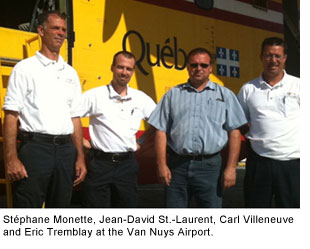 The biggest challenge, they say, is to keep track of all the moving parts of an urban fire scene. The wilderness of Quebec has its pitfalls, but news choppers and power lines and dolphins leaping in and out of the waves don’t tend to be among them. Nor do subdivisions and milling crowds.
The biggest challenge, they say, is to keep track of all the moving parts of an urban fire scene. The wilderness of Quebec has its pitfalls, but news choppers and power lines and dolphins leaping in and out of the waves don’t tend to be among them. Nor do subdivisions and milling crowds.
In Canada, Proulx says, their work mostly involves dipping into remote lakes to put out forest fires. But L.A. “looks like Legoland from the sky—I don’t know the English word for it, but the city goes on and on forever and ever. When we drop the water, we’re about 75 to 100 feet above the ground and we can see the people waving and all that. Sometimes we can see the firefighters’ faces down there.”
In fact, Monette says, one of his most vivid experiences here was in 1999 during his first L.A. fire season, when he looked down from the cockpit and realized for the first time just how high the human stakes would be on this job.
“The fires were so close to the people and the cities—it made me feel that to miss just one drop would be awful,” remembers the veteran pilot. Now 46 and the father of two teenagers in Quebec City, Monette has volunteered for the Los Angeles County contract at least a dozen times since that initial flight.
For the Canadians, the L.A. rotation is more than just a chance to hone their job skills. It’s also an opportunity to create a traveling hybrid of north-south culture. Some, like avionics technician Jean Larocque, go mountain climbing in their off hours. Eric Tremblay, 45 and on his first stint here, went to Lake Arrowhead during some time off last weekend. Jean-David St.-Laurent, a 37-year-old serving his second year in L.A., says he has taken to starting each day with a brisk 2-hour hike through the chaparral in Wildwood Canyon Park, near the hotel.
Monette is drawn to the beaches when he manages to get a day off; over the years, he says, he has acquired two surfboards. He also has worked on his communication skills. “I was surprised when I came here that everything was more or less in Spanish, not English, so I learned the language,” he recalls.
Coming to California, he says, “was a dream, since I was a little boy—this place is so associated with freedom, the California way of life.” The reality is, of course, more complex, he has since decided. “How free are you, really,” he asks, “when your way of living turns out to be an eternal rush hour?”
Proulx, whose rotation starts in October, plans to find an amateur hockey game as soon as he gets here, a habit he developed after he hooked up with an organization for Quebec expatriates online. “This year, I’m thinking about Burbank—I’ve already played in Simi Valley and Van Nuys.”
And, he adds, he’ll be bringing his fiddle.
“Another guy brings his guitar, and sometimes in the evenings, we have a few beers and play music until the bursar from the hotel comes and tells us to lower the noise.
“We play funny songs, dirty songs…My favorite one is called in English, ‘You’ve Broken the Chain on my Tractor.’ Hey, you got to do something besides just wait for fires.”
But the best part of coming to L.A., they say, is the chance to be of assistance.
Each year, they are touched by the grateful fan mail they receive. Once, they were feted by Topanga homeowners; another time, a classroom of schoolchildren drew them a packet of pictures.
And the Canadians have a secret: L.A. brushfires die more readily than Quebec’s tree-fueled conflagrations, especially with fire operations as well-run as those here.
“In Canada, we can be working on a fire for days and days and you can almost never see the end of it,” Proulx says. “But in L.A., you take off and see that big smoke, and every time, we know we’re going to go work hard and fight hard, but we got a good chance to win.”
Posted 9/14/11
County aerial firefighting resources arrive just in time
November 10, 2008
On September 26, 2008 Los Angeles County Fire Chief P. Michael Freeman, joined by Supervisor Yaroslavsky and other officials, presented a display of airborne firefighting resources available to the County for the 2008 Fire Season. The LA County Fire Department’s Air Operations Section has a fleet composed of three Sikorsky Firehawk Type I helicopters (1,000-gallon tank, crew of 14, ground- or hover-fill from numerous water sites), six Bell 412 Type II helicopters, two SuperScooper fixed wing planes leased from the Province of Quebec, Canada (1,620 gallon tanks), and one Sikorsky Helitanker leased from Erickson Air-Crane Incorporated (2,200-gallon tank); as well as “Helicopter 10,” a Bell 412 that acts as Helicopter Coordinator.
The SuperScoopers and the Sikorsky are leased during the high-risk fire season from September to December to augment our aerial firefighting resources. Each helicopter is configured for multiple missions. In addition to aerial firefighting, they perform EMS medical transport, search and rescue, hoist rescue, swiftwater and ocean rescue, fire crew transport, and night operations. Air Operations Section is comprised of 63 dedicated personnel who respond to approximately 1,600 calls for service every year.




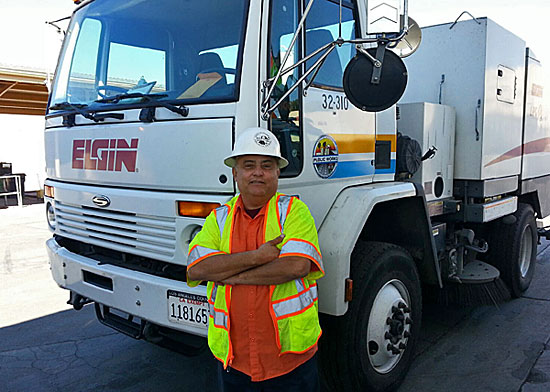
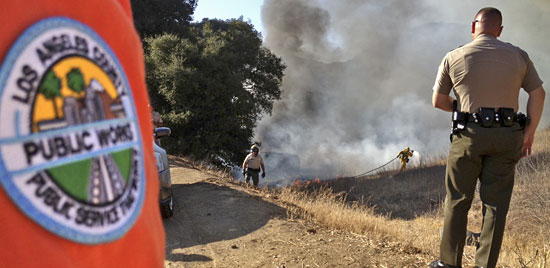
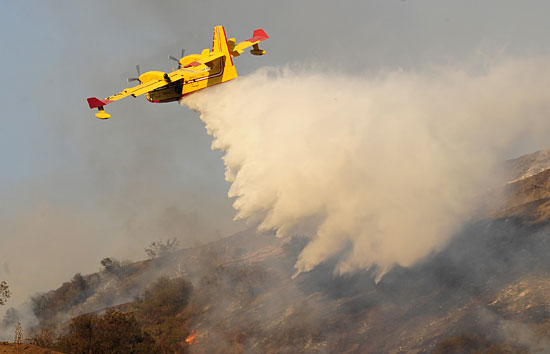
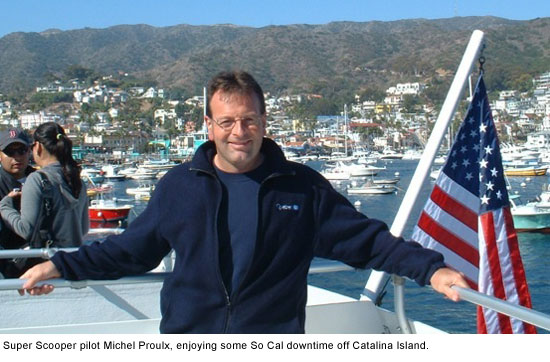








 405 bridge work causes a stink
405 bridge work causes a stink

